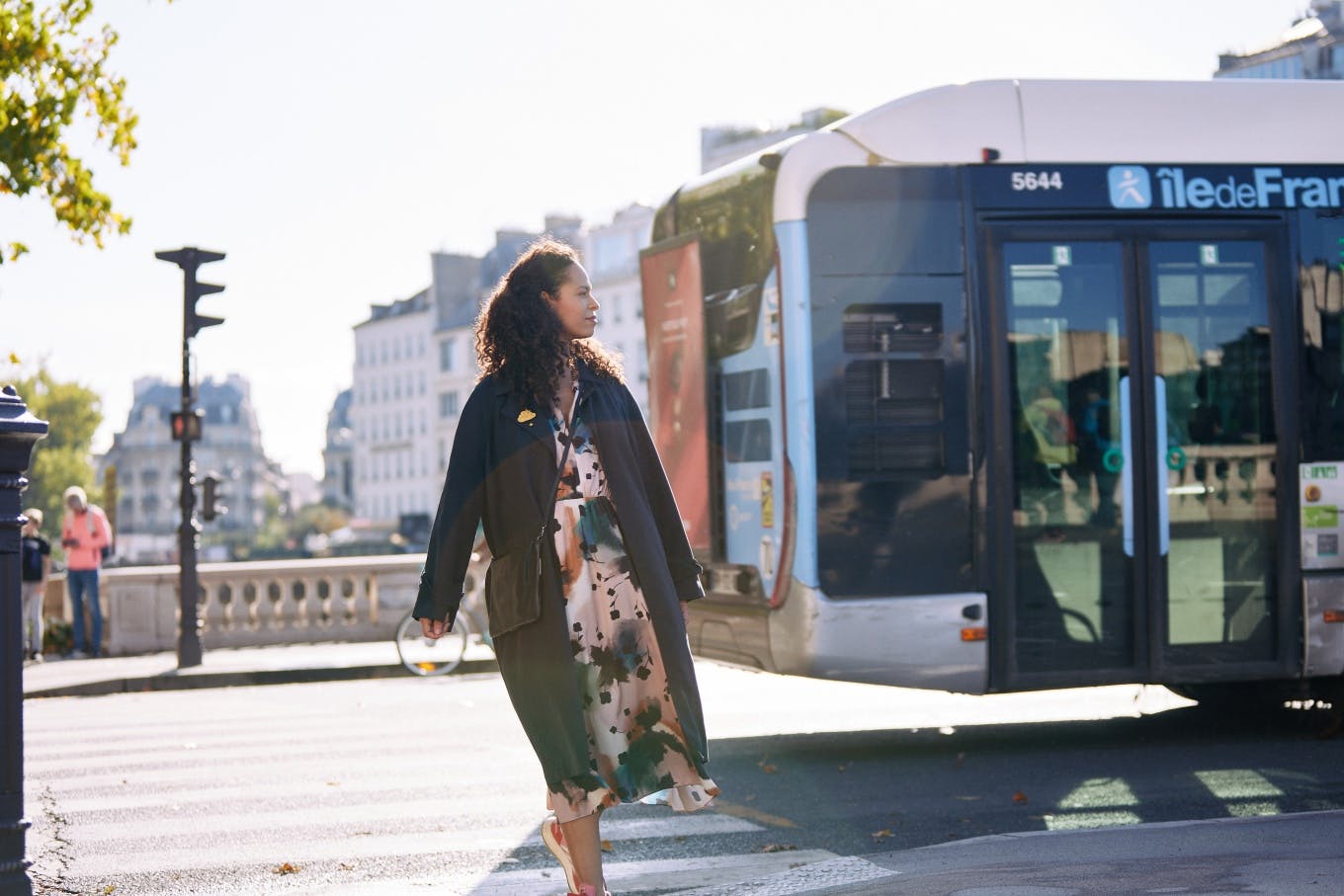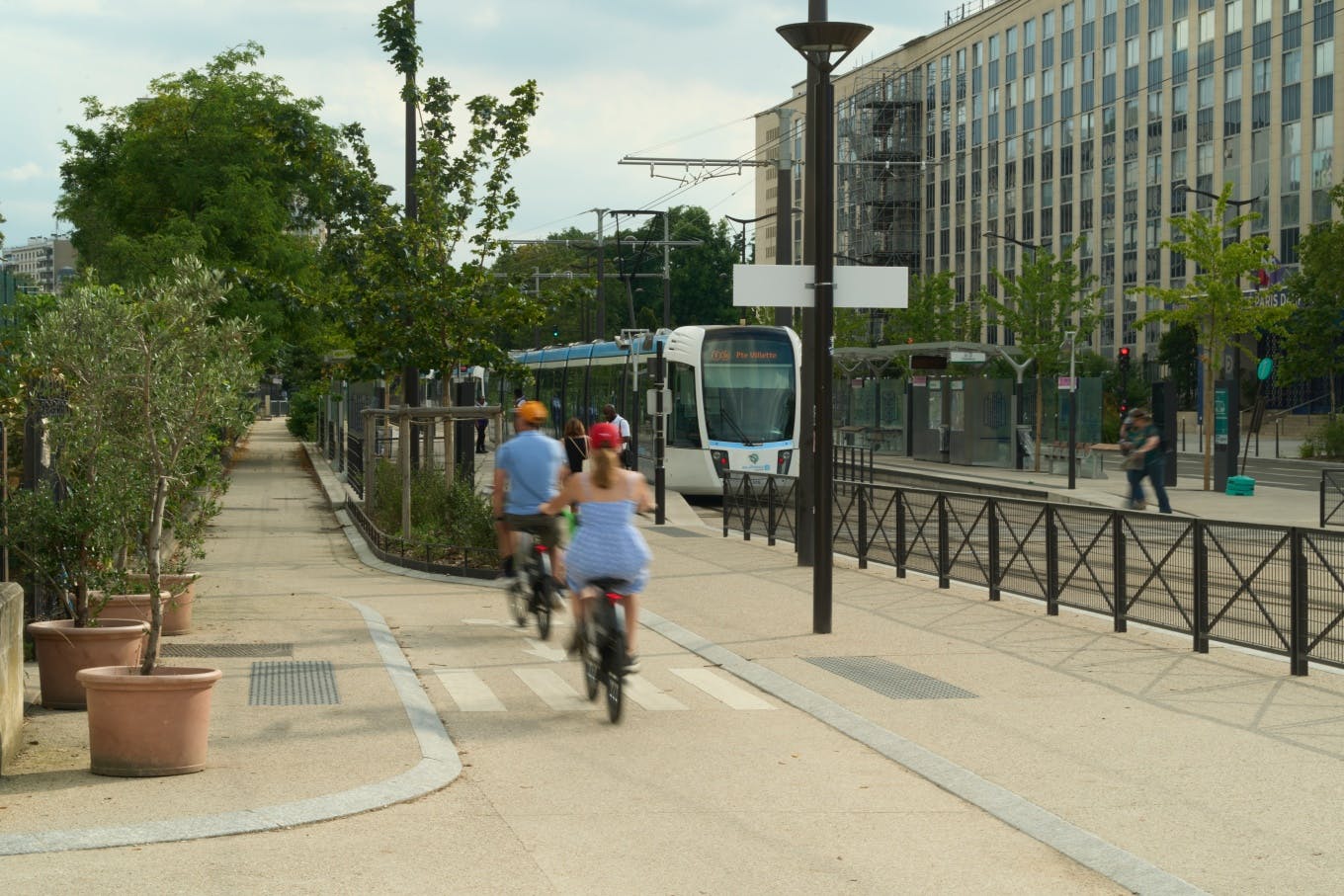Mobility plan: what will your transport look like in 2030?

Did you know? There is a plan that imagines the future of mobility in Île-de-France. And precisely, it has just been adopted.
This plan is the Île-de-France Mobility Plan for 2030, which sets out the future of mobility throughout the region in 14 axes and 46 actions.
Great ambitions for easier and more sustainable mobility in Île-de-France, which we invite you to decipher together.
The Mobility Plan in Île-de-France, how does it concern you?
The Mobility Plan for 2030 is the successor to the Île-de-France Urban Travel Plan : a strategic plan that organised mobility in the region and set the main guidelines for the period from 2010 to 2020.
The new version, approved by the Regional Council on 24 September 2025, renews and strengthens the ambitions for the use of public transport and more sustainable mobility solutions, until 2030.
An ambition rooted in the reality of the territory
This 2030 Mobility Plan is the result of long-term work and in-depth expertise of the Ile-de-France region developed by Île-de-France Mobilités.
It is based on:
Anticipation of urban and socio-demographic changes
Thanks to a partnership with the Paris Region Institute, Île-de-France Mobilités can anticipate the trajectory of evolution of the Île-de-France region , such as: the evolution of the places of residence of the inhabitants, the places of work of the working population or the ageing of the population. All of these factors are transforming everyday mobility.
A detailed analysis of travel flows and their environmental impact
To define the objectives of the Plan, Île-de-France Mobilités carried out simulations to estimate the impact of the planned changes on travel according to the different means of transport. Additional research with Airparif has made it possible to anticipate the evolution of greenhouse gas emissions and the pollutants that would result from them.
An understanding of local issues
Île-de-France Mobilités' in-depth knowledge of the Region allows us to design transport solutions that precisely meet the current and future needs of Ile-de-France residents, while adapting to the specificities of each territory, whether urban or rural.
Who is involved in the development of the Mobility Plan in Île-de-France?
The implementation of the 2030 Mobility Plan does not only involve Île-de-France Mobilités, but all regional mobility stakeholders such as:
- The Île-de-France Region
- The State
- Departments, inter-municipalities and municipalities
- Transport, people and goods operators and stakeholders
- Associations and economic actors in the territory : who were able to share their expectations and speak during workshops and consultations
What are the objectives of the Mobility Plan in Île-de-France?

1 - Responding effectively to current environmental and health challenges
- Improving air quality
- Reducing greenhouse gas emissions
- Improving road safety
- The energy transition
- Adapting to climate change
- Preserving biodiversity and the health of Ile-de-France residents
2 - Achieving ambitious ambitions
- The -26% reduction in greenhouse gas emissions
- Lowering the concentration of pollutants below regulatory limit values
- Improving road safety by reducing the number of deaths and serious injuries on the roads and streets by 50% between 2025 and 2029.
- - 15% of trips by car and motorized two-wheelers between 2019 and 2030
- A 15% increase in trips made by public transport between 2023 and 2030
- Tripling the number of trips made by bike
2030 Mobility Plan: what are the 14 areas of action?
Want to know more? We have deciphered for you, action by action, all the ambitions of the Mobility Plan for 2030.